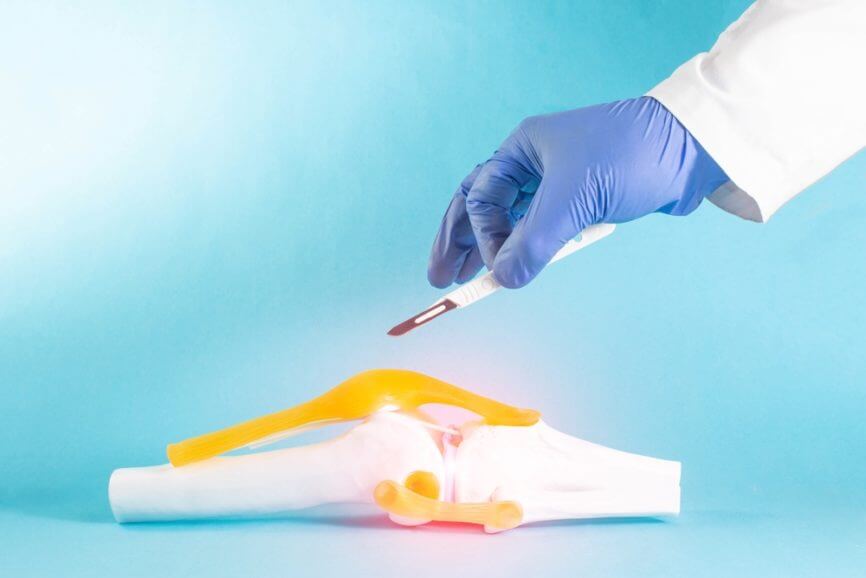What is the Foot and Ankle Outcome Score (FAOS)?
The Foot and Ankle Outcome Score (FAOS) is a patient-reported outcome survey that measures the function of the ankle and foot joint complex and provides important information regarding ankle-related physical limitation and disability (1,2). It has been recommended by the International Ankle Consortium to evaluate functional imitations of individuals with chronic ankle insufficiency and is one of the most frequently used foot and ankle-specific measures (1,3).
The FAOS was first described in 2001 by Dr. Ewa M. Roos, Dr. Sveinbjörn Brandsson, and Dr. Jon Karlsson as an adaptation of the Knee Injury and Osteoarthritis Outcome Score (KOOS). It was originally studied and validated in patients that had received lateral ankle ligament reconstruction (4).
The FAOS has been translated and validated in multiple languages including Dutch, Chinese, Korean, Thai, Portuguese, Persian, German, and Turkish (3).
Structure and Scoring
The FAOS consists of 42 items distributed among 5 subscales: Symptoms (7 items), Pain (9 items), Activities of Daily Living (17 items), Sports and Recreation (5 items), and Quality of Life (4 items). Each item consists of a 5-point Likert scale scored from 0 to 4. A value of 0 indicates no pain, symptomatology, or functional limitations, while a value of 4 indicates the worst possible pain, symptomatology, or functional limitations. The raw score for each subscale is summed as a total raw score with a maximum possible total score of 168 points (i.e. maximum score of 4 per item multiplied by 42 items total).
In contrast, the final total FAOS score is a transformation from the total raw score that ranges from 0 to 100 representing worst to best outcomes, respectively. These scores correspond to a calculated percentage. More specifically, a patient’s total raw score is subtracted from the maximum raw score of 168 and then divided by that maximum value of 168, thus leading to a range of 0 to 100 where a higher number equals a better outcome.
Strengths
The FAOS demonstrates validity and reliability in multiple languages (3). The original work by Roos, Brandsson, and Karlsson demonstrated for the five subscales Cronbach’s alphas, Spearman’s correlation coefficients for test-retest, and intra-class correlation coefficients ranging from 0.88 to 0.97, 0.85 to 0.96, and 0.70 to 0.92, respectively (4).
Sierevelt et al. found in a systematic review that all studies evaluating measurement properties of FAOS exhibited at least fair methodological quality and demonstrated at least limited evidence for validity, reliability, and responsiveness. They also reported a comprehensive range of diseases studied from general foot and ankle disorders to hallux valgus, arthritis, and acquired flatfoot among others.
At the time of publishing this blog, the minimal important change (MIC) values have been reported for four of the five FAOS subscales (5).
Considerations
While promising, the methodological quality for studies validating FAOS is still suboptimal. Studies have found ceiling effects ranging from 19% to 52% (3). Additionally, the FAOS can be perceived as lengthy at 42 items. It is patient-administered and thus relies on patient understanding of the tool.
License
The FAOS is free to use and does not have any licensing requirements.
References
- Goulart Neto AM, Maffulli N, Migliorini F, de Menezes FS, Okubo R. Validation of Foot and Ankle Ability Measure (FAAM) and the Foot and Ankle Outcome Score (FAOS) in individuals with chronic ankle instability: a cross-sectional observational study. Journal of orthopaedic surgery and research. 2022 Dec;17(1):1-7.
- Terada M, Harkey MS, Wells AM, Pietrosimone BG, Gribble PA. The influence of ankle dorsiflexion and self-reported patient outcomes on dynamic postural control in participants with chronic ankle instability. Gait & posture. 2014 May 1;40(1):193-7.
- Sierevelt IN, Zwiers R, Schats W, Haverkamp D, Terwee CB, Nolte PA, Kerkhoffs GM. Measurement properties of the most commonly used Foot-and Ankle-Specific Questionnaires: the FFI, FAOS and FAAM. A systematic review. Knee Surgery, Sports Traumatology, Arthroscopy. 2018 Jul;26(7):2059-73.
- Roos EM, Brandsson S, Karlsson J. Validation of the foot and ankle outcome score for ankle ligament reconstruction. Foot & Ankle International. 2001 Oct;22(10):788-94.
- Tapaninaho K, Uimonen MM, Saarinen AJ, Repo JP. Minimal important change for foot and ankle outcome score (FAOS). Foot and Ankle Surgery. 2022 Jan 1;28(1):44-8.



